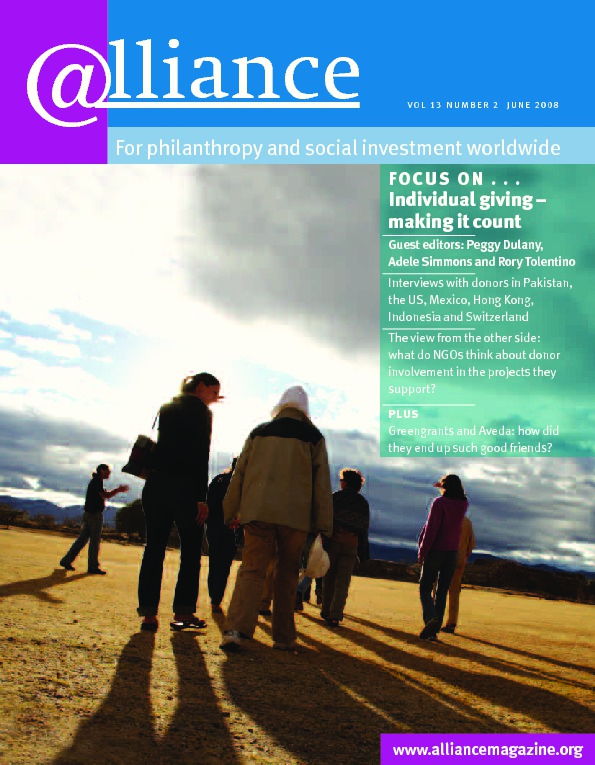The informative exchange between Joel Fleishman and Bill Schambra highlights two important issues in current philanthropic practice that are not explicitly addressed by either writer. First, despite Joel’s claim that foundations have notably exercised leadership in finding ‘innovative solutions to society’s problems’, most of the cases he cites actually involved foundations following the lead of other civil society groups (albeit aiding with early funding).
I would argue that this pattern characterizes the dominant historical behaviour of foundations and is actually more consistent with the stance championed by Bill, namely, that they should allow the community to take the lead, rather than arrogating to themselves ‘superior wisdom’ and seeking to engage in massive social engineering. Thus Bill criticizes more what Joel claims for the role of foundations rather than what the actual historical practice has been. (Clearly there are exceptions to this pattern, but the writers are talking about general tendencies.)
On the other hand, current trends in the field are moving much more in the direction that Bill is decrying – towards an inflated sense of the ability of foundations to comprehend and guide social change from above. An exaggerated emphasis on the rhetoric of metrics and bottom-line performance is part of this trend. Theory-driven, directive funding that emanates from this mindset is what drives many non-profits to mutter resentfully under their collective breaths about the ordeals of dealing with foundations.
This tendency is the modern expression of an inherent philanthropic dilemma. Bill alludes to it in his reference to the progressive movement’s influence. Historian James Morone provided an elegant description of this dilemma, which he called the ‘progressive oxymoron’ – the effort to combine direct democracy with scientific administration. The phrase captures an unresolvable tension between the desirable goal of responding to the community and the equally desirable goal of exercising judgement and leadership in the role of those charged with administering resources on behalf of the public.
Although the dilemma is inescapable in the practice of philanthropy, there is one relatively overlooked approach that shows some promise of bridging the gap: strengthening civic engagement. Few foundations support this work, but paying more attention to it would go a long way towards closing the distance between the approaches advocated by Joel and Bill.
Bruce Sievers
Visiting Scholar, Stanford University


Comments (0)
While the dilemma remains inevitable in philanthropic practice, one relatively neglected approach shows promise in bridging the gap: strengthening civic engagement. Although few foundations currently support this work, paying more attention to it could significantly narrow the distance between the approaches advocated by Joel and Bill. geometry dash meltdown